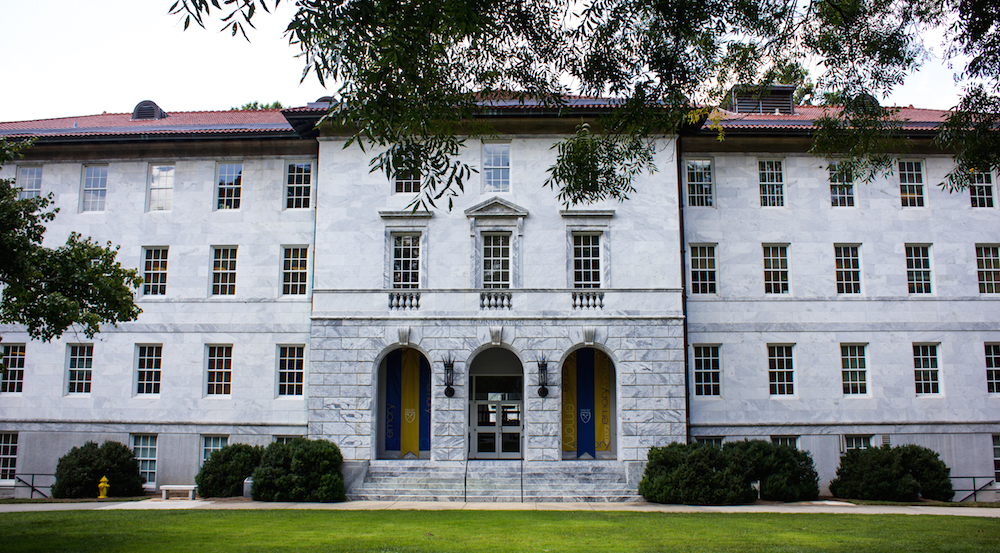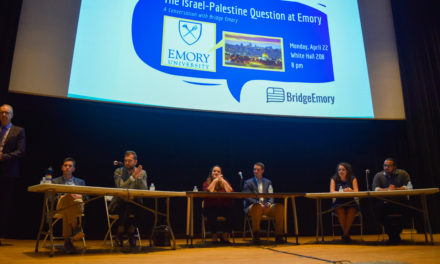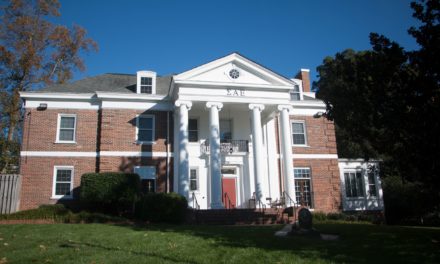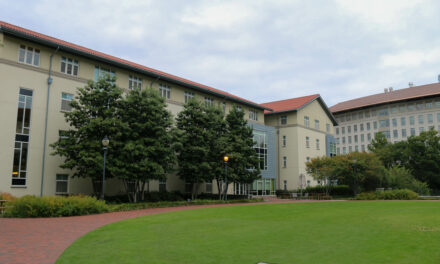The internal review, a 150-page document, addresses issues ranging from $4 million of reallocated funds from the department changes to concerns that the College’s budget is unsustainably drawn from tuition revenue while expenses are gradually exceeding revenue.
An external review team made up of administrators from other universities around the country conducted a Town Hall meeting with faculty members on April 8. The review itself, however, has not been released or made available to the public.
Neither Claire Sterk, the provost and executive vice president for Academic Affairs, nor any members of the external review team responded to requests from the Wheel for interviews by press time. Many faculty members were also asked to comment about the external review but said they were reluctant to discuss what was said in the meetings with the external review team.
“I appreciated the opportunities provided to meet with the external reviewers to discuss the College and its place in the University at this important time,” Women’s, Gender and Sexuality Studies and African Studies Professor Pamela Scully said.
College Dean Robin Forman said the self-study was not surprising.
“It’s less about what we’re doing and more about how we’re doing it,” he said.
Curricular Changes
Forman discussed the section of the self-study that assesses the College’s curricular changes since the last self-study, including the after-effects of the department changes announced in 2012.
Since the departments — such as Journalism, Educational Studies and Visual Arts — were phased out, the College has now reallocated the $4 million of freed up funds to existing departments and to support faculty research and travel.
“We were not supporting our faculty sufficiently,” Forman said, adding that some of the funds will also go toward new faculty hires.
The self-study concludes that the curricular changes are helping to move the College in the right direction, despite the outcry and controversy immediately after the department changes announcement. Specifically, it stated the committee reports — such as digital and new media, neuroscience and the study of modern China — have helped to “build interdisciplinary communities.”
The document highlights other positive curricular changes such as changes to general education requirements and credit hours, new programs in human health, visual arts and engineering sciences and a joint program with the Goizueta Business School and Laney Graduate School.
The study also specified particular departments with fluctuating enrolling numbers, even though it is not clear whether “the trends are short-term or more lasting,” according to the document.
The economics major is flourishing, with more than 1,700 enrollments and growing, but its faculty size has stayed more or less the same, according to the study. The department recruited three full-time faculty and is conducting searches for three more.
The mathematics and computer science programs have also experienced growth in enrollment, as did the biological sciences program.
Programs in the humanities, however, such as English, comparative literature and history, have seen declines in enrollment following “a national trend,” according to the study. While this is not true of every humanities field at Emory, the study states that these numbers have pushed the College to work with the Office of Admission to actively recruit students interested in these disciplines.
“We are recruiting stronger students every year,” Forman said.
Finances
Forman said that the biggest accomplishment of the College since the last self-study was maintaining the ability to thrive even after the financial crisis of 2008, which he described as the “most trying time.”
“From 2008 to 2012 or 13, our focus was on the stresses from the recession,” Forman said. “Our faculty and students continued to do remarkable work.”
The document explains that much of the financial stress is partly due to recent unprecedented allocation of funds to financial aid.
At the time of the last review, $38.7 million from the College went toward financial aid. Now the number has increased to $80.6 million — almost 29 percent of the College’s budget.
The study’s five-year budget projection shows limited returns in the next two years, a deficit in 2016 to 2017 and small returns to reserves in the next two years.
However, the College plans to prioritize these challenges, according to the document, by consulting other avenues of revenue, developing new degree programs and pursuing more fundraising opportunities.
The percentage of the College’s budget that comes from tuition revenue has increased from 86 percent to almost 90 percent since the time of the last review, the document states.
A side effect of these financial challenges has been smaller faculty salary increases. The self-study stresses that the College managed to absorb more than $50 million in expenses and lost revenue over the last seven years.
While the budgets for 2010 to 2011 and 2011 to 2012 both ended with deficits, 2012 to 2013 saw a balanced budget, albeit by a small margin.
As such, the department changes were meant to “reduce our expenses,” so the College did not have to pursue one-time contributions to overcome deficits in 2011 and 2012.
In order to decrease such heavy reliance on tuition revenue, the self-study proposed two goals. The first recommended that the College decrease its dependence on temporary faculty by converting some of them to full time faculty and reducing the demand for them by making strategic curricular changes.
The second goal involved changing the budgeting process itself to account for ongoing teaching expenses and salary recovery, which “would provide a more accurate picture” of expenses.
“We are looking at a future in which our expenses are projected to grow faster than our revenues; we have significant concerns about our ability to sufficiently reward and support our faculty and staff and we still must make sure that we have adequate resources for innovation and creativity,” the document states.
On the other hand, the self-study indicates optimism about the College’s ability to meet these challenges.
The document states that the College development team plans to foster a culture that seeks philanthropic support as part of an initiative to grow scholarship donations. Forman added that the College will also actively pursue a more diverse range of funding opportunities, such as grants from private sources.
“Every self-study has its own time and place,” Forman said, adding that in the past it could be easy to set up a 10-year plan, but now strategic planning is required at every incremental step.
Additional Conclusions
The self-study also highlights two trends in student demographics: an increase of international students — now at 16 percent of the entering class — and a growth in students of Hispanic or Latino/a descent — now at 7 percent.
The document also notes that 17 percent of the College faculty is 65 years or older and 34 percent are 60 years or older, many of which are in the social sciences — especially in the psychology, political science and sociology departments.
Given the inability to predict when faculty will retire, the College plans to replace an entire generation of faculty over the next five to 10 years.
The document concludes with five overlapping areas of interest that “present both challenge[s] and opportunit[ies] for the administration and faculty” of the College.
First, the document concludes that the College ought to take more advantage of resources in the University.
Second, it emphasizes thoughtfully managing the faculty generational change.
Third, it hopes for strategic planning in regards to considering new types of processes for planning in the future.
Fourth, it calls attention to the College’s financial stress. The last area the document pointed out was the stature and reputation of Emory, stating that while reputation enhancing is important, rankings ought not drive decisions.
Finally, Forman’s contract is set to expire this year, but he declined to comment on whether his deanship will be renewed following the external review of the University.
—By Rupsha Basu
Rupsha Basu (16C) was the Emory Wheel's executive editor from 2015-2016 and served as the Wheel's news editor prior to that. She currently attends New York University School of Law.








Please if you are of the Emory Administration (or anyone for that
matter), read this Emory Wheel editorial by an Emory professor if you
haven’t already. To introduce myself, I am an upcoming anonymous
freshman at Emory, and I am afraid that Emory’s seemingly complacent
academic reputation has concerned me. I wish for Emory to realize its
potential for improvement and CHANGE–not only in the public approval of
the press via mass media (e.g. groundbreaking research and notable
progress to the Olympics though those are spectacular)–but in the
day-to-day catering of undergraduate students. The students may look to
be on the right tracks of pre-med this and pre-law that, but their
struggles for attaining those titles and degrees come at a stressful
cost (not speaking solely of finances here). I hope the reader of this
comment
takes a course of ACTION after reading the editorial article, which
writes much more fluently of the case I am trying to make here.
As
an upcoming freshman, I especially want to impact Emory’s future in its
education (for the better) because in about two months I’ll become a
part of Emory, and this is my first step.
Read this please and share amongst yourselves:
http://emorywheel.com/emorys-d…